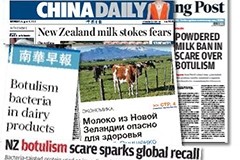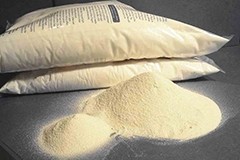Soapbox
Reality of ‘botulism scare’ only understood once it is put in context

If you are remotely involved in public commentary in the food sector, here’s a free tip: go download a copy from Amazon, find a quiet spot, and enjoy his acute observations. I assure you that the few hours set aside will pay dividends in your day job.
At a minimum, reading or watching the news will be a different experience. You’ll start to spot bad arguments, weak stories, and unfounded but panicky reports all over the place – the sort of stories that remind us how the food-specific news from FoodNavigator is a proverbial oasis in the desert.
One of Baggini’s key points is that so often in media reports, the existence of a risk is revealed – whether it be BPA in plastics, spray residues on vegetables, synthetic food colours and their effects – although the actual likelihood of there being a significant risk, of the clear-and-present-danger sort that sets the alarm bells ringing, is generally extremely slim, if not close to impossible.
Of course, sometimes there is an attempt at balance where, after a full-page shock/horror story, there might be a perfunctory statement from an expert saying there is nothing to worry about. But this is usually after numerous paragraphs listing so-called side effects and grisly outcomes usually involving references to cancer or a slow, painful death somewhere along the line.
Science of the lamingtons
As CEO of the New Zealand Food & Grocery Council, I’ve found many examples over the years, but some are more absurd than others.
Earlier this year, the New Zealand Herald published a story about the iconic NZ/Australian cake, the lamington. For the benefit of readers in other countries, this is a cube of sponge cake, dipped in pink jelly syrup and covered in coconut - hardly a sophisticated contribution to international cuisine, but I digress.
The article highlighted the use of the food colour Carmoisine (e122), a perfectly safe synthetic colour, although not that this was the impression the reader was left with.
Though this colour has been used safely for generations to provide a pretty pink, the article left the reader thinking that feeding children the humble lamington was akin to giving them a banned poison. The risks associated with eating lamingtons were not put into the context of the likelihood of actual risk – in this case, none.
The New Zealand blogger Whaleoil helpfully did the sums and found that someone would have to eat 90,000 Lamingtons to reach the acceptable daily intake of Carmoisine!
But the actual likelihood of risk was nowhere to be seen in the Herald article, which like so many of its articles about colours does little more than scaremonger.
Baggini also looks at examples of black pepper and tannins from tea and coffee, noting that it would be impossible to consume the enormous quantities required to provoke the carcinogenic effects they are supposed to produce.
Antisocial media
But over the past few weeks, there has been an even more concerning example in New Zealand during the early stages of the Fonterra whey protein product recall, dubbed in the media as a “botulism scare”.
Now, Friday afternoon food recalls in any market are about as popular as a root canal, but as every leader in the food industry knows, while undesirable, recalls will happen from time to time.
Referring to the recalls by Fonterra and then its customer Nutricia as high profile probably doesn’t describe the tsunami level of media coverage adequately.
Coverage of these recalls dominated every media outlet for more than 10 days - every TV news bulletin, every talkback radio station and news story, every newspaper, endless Twitter feeds, Facebook entries and other online media.
The fact that the infant formula recalls were precautionary, and were about food quality, rather than food safety issues, was completely lost on consumers. This was because they had been fed a constant stream of stories about the horrific symptoms of botulism, a condition so rare in New Zealand that there have been only a couple of known cases in the past 30 years, and even then they were the result of someone eating a dodgy concoction of home-bottled shellfish.
Scare stories
It’s no surprise that many New Zealand parents were seriously frightened about the infant formula they’d been feeding their babies when they saw or heard the long list of grisly and severe botulism symptoms, from nausea to blurred vision, suffocation and respiratory paralysis.
Yes, they are the official symptoms of full-blown cases of botulism, but what was missing in much of the coverage was the emphasis on its rarity and the fact that there was almost zero chance of anyone coming down with a case linked to the whey in question.
I suspect some scientists were aware of how remote the chances were. But when the combined forces of government and ministries are on a full-force public safety health alert, it’s hard, if not professionally risky, to be the one to create that “emperor has no clothes” moment and suggest that regulators and media could safely dial back the alarm without the success of an efficient precautionary recall being affected.
After New Zealand infectious diseases specialist Dr Tim Blackmore was widely reported as saying "it seems to me [the botulism scare] would be a storm in a teacup, but on a case for food safety Fonterra have done the right thing", some government officials were clearly of the view that such comments were not responsible at a time the Ministry of Health - not keen on infant formula generally - was in full public health overdrive.
Many parents, petrified about the health of their precious babies, would have been put at ease if the actual risk have been better described, and they’d been told the risk of botulism was, as described by one eminent scientist, less than one in a million – almost nil.
The precautionary recalls would still have been executed in an orderly manner because food companies like Nutricia and Fonterra have high food safety and food quality standards, but consumers would have felt more confident that there was no worry of any formula-induced Armageddon.
Had specialists and scientists been at the forefront of this issue and assisted with the communication of risk earlier on, in this case the infinitesimal risks associated with the precautionary recalls, perhaps there would have been less opportunity for scaremongering.
When the four New Zealand inquiries into the whey incident conclude, no doubt there will be good lessons for all involved.







